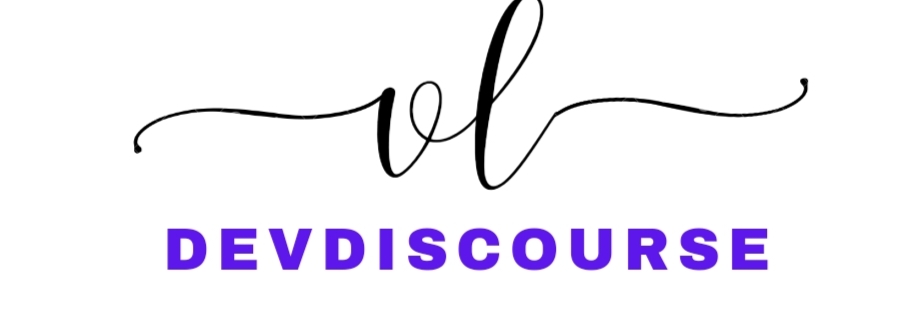Understanding LEPBound: A Comprehensive Guide to Improving Language Learning
Introduction
Language acquisition has always been a challenging yet rewarding journey, whether you’re learning for personal growth, professional advancement, or travel. In recent years, a concept known as LEPBound has gained traction among language learners and educators alike. But what exactly is LEPBound, and how can it revolutionize your language learning experience?
This article will dive into the world of LEPBound, breaking down its meaning, benefits, and practical applications. We’ll explore how this concept can help learners overcome barriers to fluency, provide strategies to incorporate LEPBound into your study routine, and address common questions surrounding this innovative approach.
What is LEPBound?
LEPBound is a term derived from “Language Exposure Potential Boundaries.” It refers to the limits that language learners face when trying to achieve fluency due to restricted exposure to authentic language usage. These boundaries can include limited access to native speakers, cultural nuances, or real-world contexts where the language is used naturally.
The goal of LEPBound is to maximize language exposure beyond traditional learning environments by leveraging technology, immersive experiences, and tailored techniques. By breaking down these exposure barriers, learners can accelerate their path to fluency, improve comprehension, and build confidence in their language skills.
Key Elements of LEPBound
- Authentic Language Exposure: LEPBound emphasizes the importance of engaging with native-level language materials, such as podcasts, movies, social media, and conversations. This exposure helps learners pick up colloquial expressions, accents, and cultural references.
- Contextual Learning: Rather than focusing solely on grammar and vocabulary, LEPBound encourages learning within context. This means understanding how words and phrases are used in real-life scenarios, leading to a deeper grasp of the language.
- Adaptive Techniques: The concept is adaptable, allowing learners to tailor their exposure based on their proficiency levels, learning goals, and personal interests. Techniques can include language exchange partnerships, virtual reality language apps, or interactive language games.
- Focus on Active Use: LEPBound promotes active use of the language through speaking, writing, and even thinking in the target language. This active engagement reinforces retention and fluency, moving beyond passive learning methods.
Benefits of Implementing LEPBound in Language Learning
1. Accelerates Fluency
By expanding your exposure to natural language use, LEPBound helps bridge the gap between textbook learning and real-world application. This accelerates your ability to think and respond in the target language, leading to faster fluency.
2. Enhances Listening and Comprehension Skills
Engaging with authentic audio and video content develops your listening skills, enabling you to understand different accents, speech speeds, and informal language that are often missing in traditional learning resources.
3. Boosts Confidence in Speaking
Practicing with native speakers or through simulations reduces anxiety related to speaking a new language. LEPBound encourages more speaking practice, which is crucial for building conversational confidence.
4. Improves Cultural Understanding
Language and culture are deeply intertwined. LEPBound goes beyond language mechanics by exposing learners to cultural contexts, social norms, and idiomatic expressions, leading to more meaningful interactions.
5. Customizable Learning Experience
Unlike one-size-fits-all language programs, LEPBound can be tailored to suit individual learning styles, interests, and goals. This personalization keeps learners motivated and engaged.
How to Integrate LEPBound into Your Language Learning Routine
If you’re eager to overcome language exposure boundaries, here are practical ways to incorporate LEPBound strategies into your learning journey:
1. Leverage Digital Resources
- Podcasts & YouTube Channels: Listen to native speakers discussing topics you enjoy. For example, if you’re learning Spanish, subscribe to podcasts like “Español con Juan” or YouTube channels like “Butterfly Spanish.”
- Language Learning Apps: Apps like Tandem and HelloTalk connect you with native speakers for language exchange, offering real-time practice.
2. Engage with Native Content
- Movies & TV Shows: Watch films and series in the target language with subtitles. This exposes you to natural speech patterns and expressions.
- Social Media: Follow influencers, bloggers, and content creators who speak the language you’re learning. Engage with their posts, comments, and live sessions.
3. Virtual Immersion
- Virtual Reality (VR): Use VR platforms like Mondly VR or ImmerseMe to simulate immersive language experiences without leaving your home.
- Online Communities: Join language learning forums, online groups, or Discord communities to interact with fellow learners and native speakers.
4. Practice Real Conversations
- Language Exchange Partners: Find a language exchange partner through websites like ConversationExchange or Speaky. Practicing with someone who is fluent can significantly improve your speaking skills.
- Shadowing Technique: Repeat after native speakers by mimicking their pronunciation, intonation, and rhythm. This technique is great for improving your accent and fluency.
5. Daily Language Challenges
- Set daily goals, like learning five new phrases, listening to a podcast for 20 minutes, or writing a short journal entry in the target language. Consistency is key to breaking LEPBound barriers.
Potential Challenges of LEPBound and How to Overcome Them
While LEPBound offers many benefits, some learners may face challenges when implementing this approach. Here’s how to navigate them:
1. Overwhelming Content Choices
- Solution: Start small by focusing on one or two types of content, such as a podcast series or a YouTube channel. Gradually diversify as you become more comfortable.
2. Language Anxiety
- Solution: Practice in low-pressure environments. Start with passive listening, then gradually move to active speaking practice. Remember, making mistakes is a natural part of learning.
3. Difficulty Understanding Native Speakers
- Solution: Use slowed-down audio features available on many platforms. Focus on content with subtitles, then progress to faster-paced materials as your listening skills improve.
4. Lack of Time
- Solution: Integrate language exposure into your daily routine, like listening to a podcast during your commute or watching a short video while cooking. Small, consistent efforts lead to significant progress.
FAQs on LEPBound
1. What makes LEPBound different from traditional language learning?
LEPBound focuses on increasing exposure to real-world language use, beyond structured lessons. It emphasizes practical, contextual learning that accelerates fluency through authentic experiences.
2. Can beginners benefit from LEPBound techniques?
Yes, beginners can start with simplified content and gradually increase difficulty. Engaging with native material, even at a basic level, can significantly boost language retention and motivation.
3. Is LEPBound suitable for self-learners?
Absolutely. Self-learners can take advantage of digital resources, online communities, and immersive experiences to enhance their language skills independently.
4. Does LEPBound require a language tutor or instructor?
While a tutor can provide personalized guidance, LEPBound is designed to be flexible. Many learners succeed using digital resources, peer interactions, and self-directed practice.
5. How long does it take to see results with LEPBound?
Results vary depending on factors like prior experience, consistency, and the intensity of practice. However, many learners report noticeable improvements in comprehension and speaking skills within a few months.
6. Can I use LEPBound for multiple languages simultaneously?
Yes, but it’s recommended to focus on one language at a time to avoid confusion. Once you build a strong foundation in one language, you can apply LEPBound techniques to additional languages.
7. Are there specific tools recommended for LEPBound?
Tools like Anki (for flashcards), Language Reactor (for Netflix language learning), and FluentU (for interactive video content) are excellent for enhancing your LEPBound experience.
Conclusion
LEPBound represents a powerful shift in language learning, emphasizing real-world exposure, practical application, and adaptive techniques. By integrating these strategies into your learning routine, you can overcome traditional barriers to fluency, gain confidence, and develop a deeper understanding of your target language.
Whether you’re a beginner starting your language journey or an advanced learner looking to fine-tune your skills, LEPBound offers a versatile, engaging, and effective approach. Embrace the concept, experiment with different techniques, and watch as your language skills flourish beyond the classroom.




